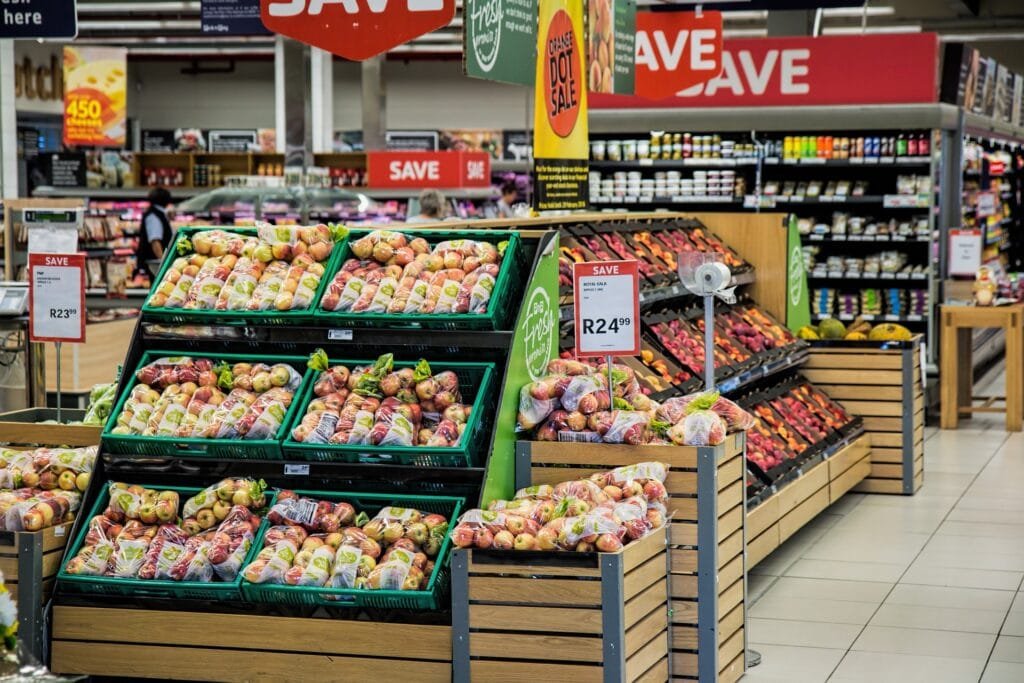UK shop prices fall at fastest rate since 2021, with non-food deflation driving overall price drop despite rising fresh food inflation due to climate and weather issues.
UK shop prices fell at their fastest rate since 2021 in September, despite a rise in fresh food inflation. According to the British Retail Consortium (BRC), overall shop price deflation was 0.6% in September, compared with 0.3% in August. The deflation was largely driven by significant price reductions in non-food items such as clothing and furniture, as retailers slashed prices to attract shoppers amid a weak demand and tighter household budgets.
Non-Food Deflation and Rising Fresh Food Costs
The fall in shop prices came amid a backdrop of continued financial pressure on consumers from high utility bills, groceries, and other essentials. Non-food items were hit hardest, with demand for clothing and furniture dropping as the UK experienced unseasonal weather that discouraged consumer spending. Retailers responded with heavy discounts to clear stock, helping to lower the overall inflation rate.
However, fresh food inflation rose to 1.5% in September from 1% in August. This increase was attributed to a combination of wet weather affecting the UK’s production of salads and soft fruits and delays in importing exotic fruits due to Atlantic storms. These disruptions have pushed up fresh food prices, making it difficult for consumers to catch a break on their weekly grocery bills.

Climate Crisis Driving Olive Oil and Sugar Prices Up
Olive oil, in particular, saw a dramatic price increase, now costing over £9.12 per litre on average, representing a 42% year-on-year rise. This surge is a result of a significant drop in global production, the lowest in over a decade, due to extreme weather conditions in major olive-producing countries like Spain and Italy. Both nations have suffered from intense droughts, heat waves, and pathogen outbreaks, all exacerbated by the ongoing climate crisis.
In addition to fresh produce, packaged food inflation remained stubbornly high, at 3.3% in September. Rising costs of cocoa and sugar contributed to the continued pressure on food prices, with the climate crisis and supply chain disruptions playing key roles in driving these prices up.
Retailers Battle Low Demand with Discounts
The BRC noted that the retail sector continues to face a tough challenge. Helen Dickinson, chief executive of the BRC, said: “September was a good month for bargain hunters as big discounts and fierce competition pushed shop prices further into deflation. Shop price inflation is now at its lowest level in over three years, with monthly prices dropping in seven of the last nine months.”
She added that while lower inflation would be welcomed by consumers, factors such as geopolitical tensions, climate change, and government-imposed regulatory costs could potentially reverse this trend in the future.
Call for Government Action on Retail Costs
Dickinson also urged the UK government to address the high business rates that continue to weigh heavily on retailers with physical stores. The BRC has long called for reform of the business rates system, arguing that it places an unfair tax burden on brick-and-mortar stores compared to other sectors. With the budget coming up on 30 October, she emphasized the importance of “decisive action” to relieve some of the financial pressures on retailers.
Broader Economic Outlook
As UK inflation gradually eases, consumers are likely to see continued price competition in non-food sectors like clothing, furniture, and electronics. However, the rise in fresh food inflation suggests that food prices will remain a pressure point for households, especially as the climate crisis continues to disrupt global food supply chains. With geopolitical tensions and supply chain uncertainties likely to persist, the trajectory of inflation over the coming months remains unpredictable.
Overall, while the latest figures offer some relief for consumers in terms of non-food prices, the continued rise in fresh food costs underscores the complexity of the inflationary environment in the UK.